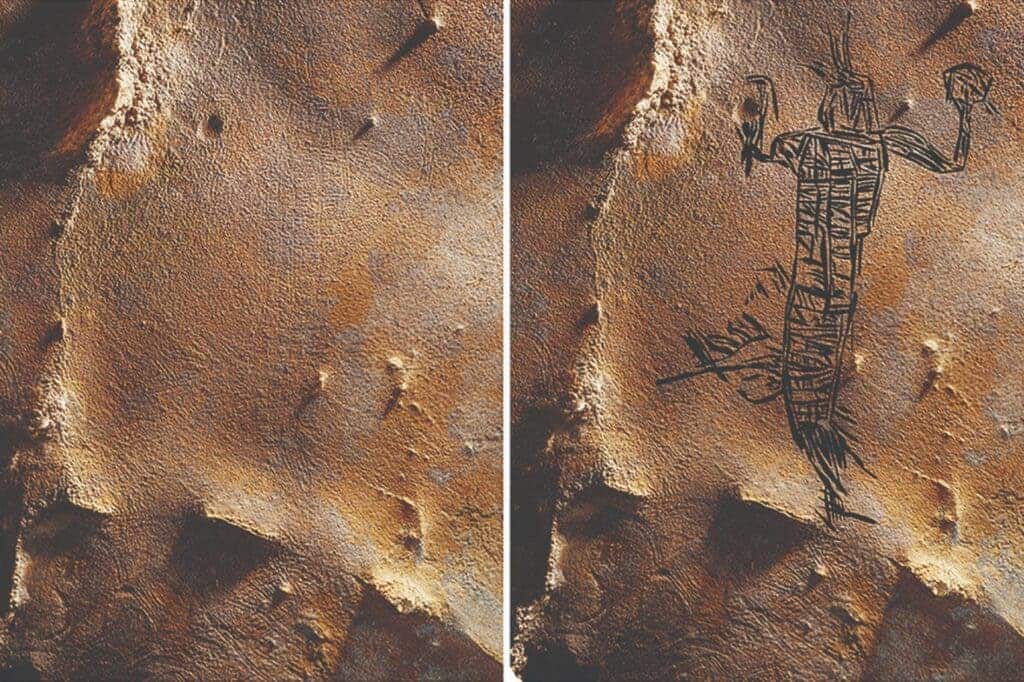Some 1,000 years ago, a group of artists carved figures into the ceiling of a cave in what’s now Alabama. Over the next millennium, the carvings became invisible to the naked eye, covered with mud that accumulated on the cave’s walls. Now, those carvings have been revealed as the largest set ever found in a cave in North America.

The cave contains hundreds of paintings by indigenous Americans, depicting figures, animals, and abstract shapes – including a three-meter image of a rattlesnake. It’s the richest place for Native American cave art in the American Southeast, the researchers said, who believe the carvings were done between the 2nd century and 10th century.
To investigate the cave’s historic art, the researchers used photogrammetry, a technique that requires taking hundreds of digital images in order to build a virtual 3D model of the objective. By using this method, the researchers were able to spot five previously unknown giant paintings, known as glyphs, all located in the cave’s dark zone.
“The problem is seeing the paintings. The cave ceiling is only 60 centimeters high,” UK archaeologists Paul Petitt and Alistair Pike, not involved in the study, wrote in a blog post in The Conversation. “Photogrammetry team to ‘lower’ the cave floor up to four meters, enough for the complete motifs to come into view for the first time.”
Looking into the cave
The cave has the unglamorous name “19th Unnamed Cave” — in order to protect its exact location in Alabama from looters and casual cavers that could cause damage to it. The cave contains hundreds of mud glyphs made by Native Americans before Europeans arrived in North America. They were likely made by torchlight by groups of at least two people who burnt bundles of river cane.
The cave, first discovered in 1998, has over three miles (five kilometers) of underground passages with most of the paintings located in one large chamber. The researchers spent two months underground capturing every part of the ceiling of the chamber with a digital camera and LED lights. In total, they collected 16,000 images.
A thin veneer of mud sticks to the ceiling of the cave because of its climate conditions. This allowed the artists to make the mud glyphs and also ensure that they were preserved for a really long time. However, the exact date when the glyphs were made is unclear. The researchers estimate they are around 1,000 years old, but further studies will be needed.
The glyphs are thematically similar to glyphs and rock art from elsewhere in North America, the researchers said. They are so massive that they weren’t previously noticed as artworks – until now. However, not every glyph has been cataloged yet, so there are probably many more secrets to be revealed from the 19th Unnamed Cave.
In their paper, the researchers described the five largest glyphs they found. Several are anthropomorphic, with humanoid bodies. Two of the anthropomorphs were about six feet long. However, the largest of the glyphs is an 11-foot serpent, with a pattern the team thinks is similar to the eastern diamondback rattlesnake (Crotalus adamenteus), native to the area.
The newly discovered drawings aren’t very old by cave standards, considering for example the painted scenes at Lascaux in France (nearly 20,000 years old) and the painting of a pig in an Indonesian cave (43,900 years old). However, the glyphs in the cave in Alabama offer a unique look into the culture of Native Americans in the United States.
The study was published in the journal Antiquity.


